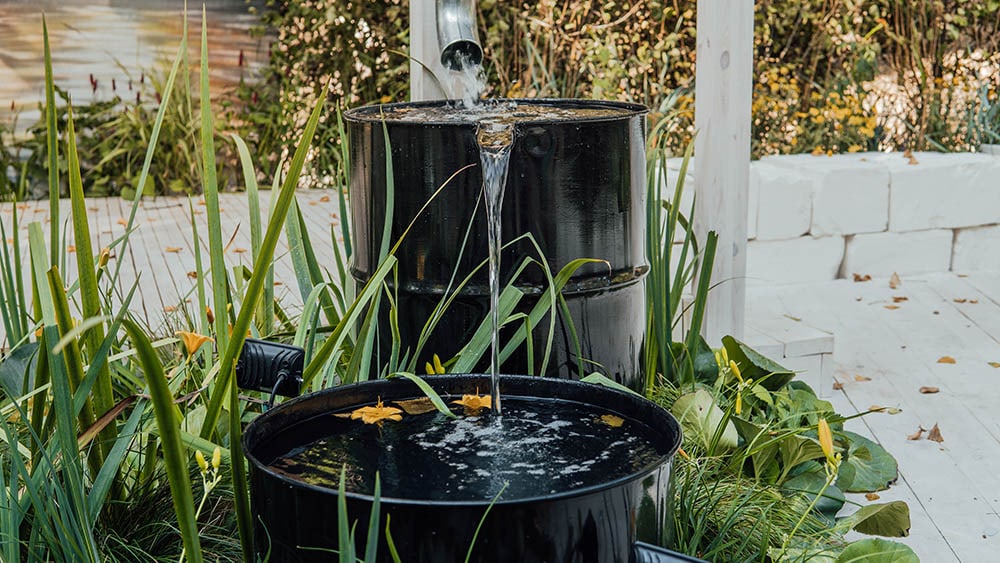What Is a Rain Garden? Pros & Cons of Getting One
-

- Last updated:

A rain garden is a small area of garden or land that is slightly deeper than its surroundings and that collects rainwater run off from roofs and other hard surfaces. The base of the dip is planted with plants that can withstand waterlogging, although a rain garden drains well and will only be waterlogged for periods of up to 48 hours. It requires that the earth at the base of the rain garden be tilled so that it drains quickly and easily, and although it is traditional to use rainwater runoff from hard surfaces, these gardens can also be established at the foot of a garden slope to gather runoff from lawns or driveways.
Such gardens tend to require little maintenance once established and they look natural. They can attract wildlife, including insects, but because the water does not pool and drains away in 48 hours, rain gardens do not attract mosquitoes.
As well as providing a wild area in your garden, the planted vegetation retains the water long enough that it is filtered as it passes through the soil, therefore reducing the pollutants and contaminants that would otherwise pass be contained.
What Plants Do Best in a Rain Garden?
It is typical to use native plants in the rain garden. Native plants should not require fertilizer because they have naturally adapted to thrive on the soil that is available, and fertilizer would naturally contaminate the water. Choose plants with a good root system and that can cope with occasionally being inundated with rainwater for periods of up to 48 hours. Local wildflowers are popular, but you can also incorporate shrubs and perennials. Some nurseries can provide a list of rain-garden approved plants, or you can search online to find a database of such plants.
Trees are not usually planted in rain gardens because they require and take more of the water than the rest of the plants. Similarly, the garden itself should not be placed anywhere where it might interfere with tree roots.
The Soil
Not all areas are suitable for a rain garden. As well as having to have a supply of rainwater runoff, the ground needs to be suitable. A ribbon soil test can be used to ensure that the soil does not have too high a clay content, while infiltration tests check that water infiltrates the ground at a rate of 1.2 inch per hour or more. These tests can also be used to determine what type of tilling is required for the soil before it is replaced.
Size and Dimensions
Most designers aim for a rain garden roughly one fifth of the size of the roof or run-off area that is being drained. In a typical home garden, this means you will need approximately 200 square feet.
Placement And Position
The garden is usually placed perpendicular to the run-off surface. It should be more than 10 feet from any building foundations and should not be placed anywhere that water pools and remains for long periods of time. The aim of the rain garden is for the water to dissipate after 48 hours, so if it is constantly waterlogged, it won’t work.

Ongoing Maintenance
The aim of a rain garden is to use native plants. Native plants do not need fertilization and should thrive in your new garden. As such, maintenance of these gardens is considered minimal. You will need to weed fairly regularly and remove any rubbish or debris. If there are any very dry periods, you may also need to water the area. After a year or two, very little maintenance will be required. The plants will outgrow and kill off any weeds, and the water from regular rain will keep the area well-watered.
Potential Cons
Rain gardens can be an effective way of minimizing rain build-up around pipes and drains, but they tend to be quite small, especially in an urban setting. This means that they will have only minimal impact on reducing water build-up.
What’s more, while maintenance gets easier after a year or two, they do still require some maintenance and you will need to landscape the area to prevent the native plants from spreading around the rest of your garden.
And, finally, if your garden is on a steep slope, a rain garden is not considered suitable, and you should not place one on a slope of more than 12 degrees.
In Conclusion
A rain garden is a small garden area that can be used to allow water to run off hard surfaces like roofs and driveways. They can prevent water from collecting on these surfaces, while also providing an almost wild garden area that is filled with native plants. They aren’t suitable for all gardens or in all circumstances, however.
- See also: How to Safely Dispose of Acrylic Paint
Featured Image Credit: EpiDemiks Studio, Shutterstock
Contents


